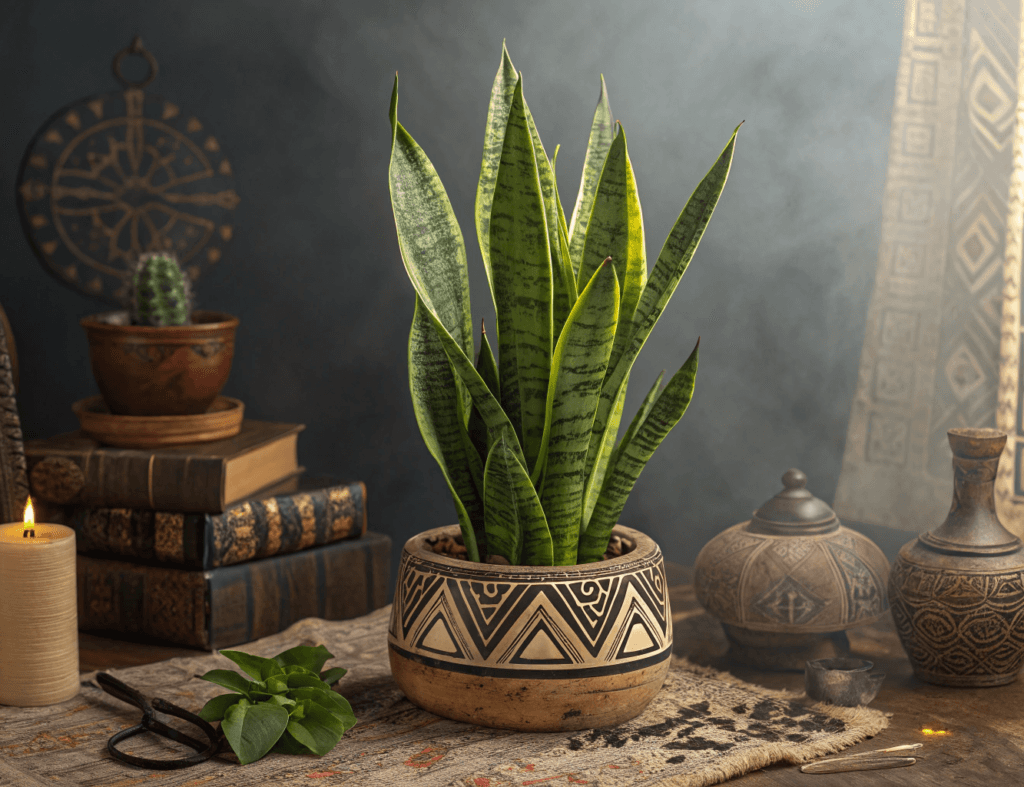Hey gardening friends! Today you will learn about the history of snake plant.
The snake plant, also known as Sansevieria, has a long history that dates back centuries. From West Africa, it was prized not only for its hardiness but also for its looks.
This plant has been grown for its beauty and air-purifying qualities for generations and that’s why it’s a popular choice for homes and offices today
In ancient times, the snake plant was used for medicinal purposes. Different cultures recognized its potential in traditional medicine; they believed it could cure ailments.
Today, snake plants are loved for their low maintenance and ability to thrive in many conditions. This plant is still a plant enthusiast magnet.
Table of Contents
The Origin of the Snake Plant
The Sansevieria has a unique variety. Understanding its evolutionary roots and various species helps reveal its importance in gardens and homes.

1. Evolution History
The snake plant is native to tropical parts of Africa, particularly in regions like West Africa. Its ability to thrive in various climates helped it spread. The plant adapted to dry conditions, making it a survivor in harsh landscapes.
Fossils show similar plant structures dating back thousands of years, reflecting its long presence on Earth. Botanists believe that the snake plant evolved from a group of plants called Dracaena.
These plants share common features, like long, upright leaves, making them visually similar.
2. Classification
The snake plant belongs to the Asparagaceae family. This family includes many other plants, but Sansevieria is the best-known genus.
Snake plants are commonly referred to by their scientific name, Sansevieria trifasciata.
The classification helps plant lovers know which type of snake plant they have and how to care for it.
3. Species Variants
There are several amazing species of snake plants. The most common is Sansevieria trifasciata (one of my favorite types), recognized by its tall, stiff leaves that have striking yellow edges.
Another popular variant is Sansevieria cylindrica, which features cylindrical leaves that grow upright.
Each species grows under different conditions. There are even hybrids that combine traits from different species.
Historical and Cultural Value
The snake plant has a place in many cultures and indicates deep connections to traditions, beliefs, and practical uses.

1. Folklore and Mythology
In many cultures, snake plants have symbolic meanings. They are often seen as protective plants. In some Asian cultures, they are believed to filter negative energy and bring good luck to the home.
In ancient African traditions, the snake plant was sometimes linked to health and strength. It was used in rituals to encourage wellness and ward off evil spirits.
2. Traditional Uses
In traditional medicine, its leaves have been used for healing purposes like the Aloe Vera plant. Some cultures made poultices from its juice to treat wounds and burns.
Furthermore, the plant is praised for its air-purifying qualities. It absorbs toxins and releases oxygen.
3. Popularity Timeline
The snake plant’s popularity has evolved. In the 18th century, it was first brought to Europe from Africa. It quickly became a favorite among plant collectors.
By the mid-20th century, it surged in popularity as houseplants gained attention. Its ability to grow in low light and care needs.
Features of Plants and Their Maintenance
The snake plant does not have specific traits and care needs.

1. Physical Characteristics
The snake plant, or Sansevieria trifasciata (it is the most popular kind of this plant), features long, upright leaves that can reach up to three feet in height.
The leaves are typically green with striking yellow or white edges. Some varieties have patterned markings on their surfaces, providing added visual interest.
These plants hold water in their leaves, enabling them to feel okay in dry conditions.
2. Growth Requirements
Snake plants are one of the easiest houseplants to care for. They prefer bright, indirect light but can tolerate low-light conditions. Direct sunlight may burn their leaves, so it is essential to find the right balance.
An ideal location is on a windowsill with filtered light or a few feet away from a window. One of my snake plants is on the ledge opposite the window.
When it comes to soil, a well-draining potting mix is a good option. Cactus or succulent mixes work well to prevent root rot. Watering should be done sparingly, allowing the soil to dry completely between waterings. Once every 1-2 weeks.
During the growing season, balanced fertilizer once or twice a season can help promote healthy growth. In the case of propagation, following simple methods can lead to successful new plants.
Bonus: Read the full article about “How to Propagate a Snake Plant“
3. Common Issues
Although the snake plant is hardy, it can experience some common issues like every plant. Overwatering is the most significant threat, leading to root rot.
Signs of this problem include yellowing leaves and mushy roots. It’s important to allow the soil to dry out completely before watering again.

Pests like spider mites and mealybugs can also affect snake plants. These pests tend to hide in leaf crevices.
I recommend regularly inspecting your plants for any of these pests, and treating them naturally.
Bonus: Read the full article “Where Should I Place a Snake Plant in My House“


 ChatGPT
ChatGPT
 Perplexity
Perplexity
 Claude
Claude
Leave a Reply